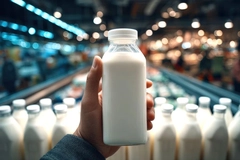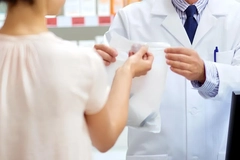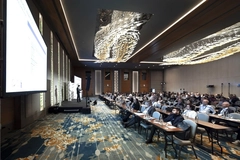New process to make safe unhomogenised raw milk
01 Mar 2011

Unhomogenised raw milk (with the cream below the cap) - a thing of the past in SA - may be something of the future if SurePure and a farmer from Eden, South Cape, succeed in convincing SA's health authorities to allow photopurification of milk.
Unhomogenised raw milk (with the cream below the cap) - a thing of the past in SA - may be something of the future if SurePure and a farmer from Eden, South Cape, succeed in convincing SA's health authorities to allow photopurification of milk.
Raw milk purified to standards well above pasteurisation is already being produced and sold in the southern Cape using SurePure turbid liquid photopurification technology.
Cape Town-based SurePure's Greg Whyte says the company's technology is ideal for farmers because it is uncomplicated and single-step, and fairly small-scale units are available - for instance, the SP40 turbulator, costing less than R1m.
The South African-developed SurePure technology uses UV-C light to photopurify microbiologically-sensitive liquids such as wine, fruit juice and milk.
SurePure technology has also been applied in the wine industry in SA, and in processing blood plasma. But it is being particularly well received in the US and Britain where the health trend makes it amenable for consumers. SurePure aims to make it available so that farmers can process the milk at farm level and claim more of the value chain.
Whyte says that in the normal SA pasteurisation scenario, milk takes two days to get from the farmer into the process of the dairy; it probably thereafter has a seven day shelf life in the cold chain.
He says that with SurePure Technology, processing takes place immediately after milking - and the packaged milk produced is achieving up to 14 days of shelf life in the cold chain. Other advantages are that the milk is nutritionally superior because it has not been subjected to high heat; consumers know where the milk comes from; and production has a lower carbon footprint with a safety assurance.
Whyte does not believe that the SurePure technology is suited to larger dairies because they already have vast investments in pasteurized milk and equipment.
There is a problem with regulation R1555, which basically requires pasteurisation of milk produced by dairies in SA. This regulation requires milk to have less than 50,000 CFUs (colony-forming units) of bacteria per millilitre - a standard which is far exceeded with the SurePure system. But it also requires milk to be tested for phosphotase; the phosphotase enzyme is a marker for the effectiveness of pasteurisation. This is not met with the SurePure system.
Says Hill: "At no stage does the milk go above 37°C. The bacteria are hit immediately after the cow is milked. The cold processing has little or no negative effect on the protein, fat, lactase or vitamins in milk."
Despite this aspect of R1555, health inspectors in the Eden municipality of southern Cape (Plettenberg to Heidelberg) are allowing trial production of SurePure-processed milk and are reportedly very impressed with the results thus far. The milk is being produced under the Milk Independent co-operative brand which has been formulated with a pioneering dairy farmer, Andrew Hill. It is hoped that other dairy farmers will join the system and produce milk for local markets.
Even if farmers don't want to do their own packaging, says Hill, they might install the technology in order to keep their milk at lower bacterial counts and perhaps achieve better prices for it from big dairies. Hill does not believe that this technology would replace pasteurization because of the long distances involved in SA dairy production - this technology is for local production and local sale.
"It could, for instance, be used to handle the surplus which farmers produce - although many farmers have the problem that they have to sign contracts for exclusive supply of all of their milk to big dairies, so it is often an all-or-nothing situation for them."
Hill's single SurePure process replaces four processes for industrial "big" milk: pasteurisation, homogenisation, standardisation and (sometimes) bactofugation.
Hill is the first person to have applied this technology in the dairy industry in SA. He says, however, that Dairy Crest in Britain is polishing milk post-pasteurisation with the technology. And the US Food & Drug Administration is excited about it because it could be used to combat anthrax and bioterrorism, he says.
Hill has been applying the technology with an SP40 unit since May 2010. Health inspectors inspect and take samples once a week. Hill says they have taken a large number of samples - before UV, after UV, contaminants, etc - and are very impressed with the results.
Currently, he is selling the milk in 1-litre, 2-litre and 5-litre plastic containers filled largely by a small machine, in the surrounding area.
A three month testing period will end at end-March 2011. Then, Eden municipality health inspectors will decide whether to allow production on this basis permanently. Because of R1555, allowing the new method of purifying milk would have to be done district by district.
Eventually, Hill and SurePure hope, the regulation will be changed to allow for photopurification - especially given its health and other advantages.
Source: SurePure
All content and features on this website are copyrighted with all rights reserved. The full details can be found in our privacy statement
Subscribe to our newsletters
By continuing to browse our site you agree to our Privacy Statement











